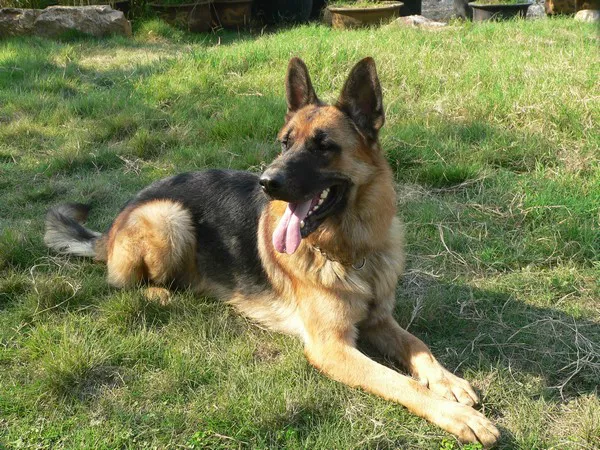The Airedale Terrier, often known as the “King of Terriers,” is a remarkable breed admired for its intelligence, strength, and loyalty. With its striking appearance and energetic demeanor, it’s no surprise that many people are drawn to this breed. However, if you are considering bringing an Airedale Terrier into a home that already has cats, you may have concerns about how the dog will interact with your feline friends.
In this article, we will delve into the temperament, behavior, and instincts of Airedales, examining their compatibility with cats. We’ll explore their characteristics, the challenges that may arise, and tips on how to foster a harmonious relationship between your Airedale and your cats. By understanding the Airedale’s nature, you can make an informed decision about whether this breed is a good fit for your household, especially if you already have cats.
Understanding the Airedale Terrier
Before we explore how Airedales behave around cats, it’s essential to first understand their breed characteristics. Airedales are the largest of the terrier breeds, originally bred in England to hunt and catch game such as otters, rats, and even larger prey like deer. As a working dog, the Airedale has been trained for various purposes, including hunting, guarding, and herding. These early roles required the dog to be bold, independent, and intelligent — qualities that have remained with the breed today.
Personality Traits of an Airedale Terrier
Airedales are often described as confident, independent, and spirited. They have a strong desire to please their owners, but they are also known for their independent streak, which can sometimes make training a challenge. Their intelligence means they can learn quickly, but their independent nature may require firm, consistent guidance. Airedales are generally friendly and social dogs, known for forming close bonds with their families.
While they are affectionate, they are also protective and will alert their owners to any potential threats. This protective instinct can be beneficial, but it may also pose challenges when it comes to introducing a new pet or unfamiliar animals into the home.
In terms of behavior, Airedales are typically high-energy dogs. They require regular physical and mental stimulation to stay happy and healthy. If they do not receive enough exercise or mental enrichment, Airedales can become bored and may resort to undesirable behaviors such as excessive barking or chewing.
Airedales and Other Pets
Airedales are often friendly with other dogs, especially if they are introduced properly. However, when it comes to other species, such as cats, their behavior can vary depending on individual temperament, upbringing, and training. Some Airedales may coexist peacefully with cats, while others may be more prone to chasing or even showing aggression. To understand how an Airedale might react to a cat, it is important to consider its prey drive, energy levels, and socialization.
The Prey Drive of Airedales
One of the most important factors to consider when assessing an Airedale’s compatibility with cats is the dog’s prey drive. As mentioned, Airedales were originally bred to be hunting dogs, and they have a natural instinct to chase small animals. This prey drive is strong in some Airedales, especially if they are not socialized properly or if they have not been trained to coexist with other pets.
For some Airedales, the sight of a cat may trigger their hunting instincts, leading them to chase or attempt to catch the cat. This does not necessarily mean the Airedale will harm the cat, but it can cause stress or anxiety for the feline. In some cases, the Airedale may act aggressively toward the cat, especially if it feels threatened or challenged by the cat’s presence.
However, not all Airedales will have the same reaction to cats. Some may have a low prey drive and may be more likely to tolerate or even enjoy the company of cats. Much depends on the individual dog’s personality, as well as the level of socialization the dog has undergone.
The Importance of Early Socialization
One of the most important steps in ensuring that an Airedale is good with cats is early socialization. Socializing a dog involves exposing them to a variety of experiences, people, and animals in a controlled manner from an early age. The goal is to teach the dog to react calmly and positively to different stimuli, including the presence of other pets.
For Airedales, socialization should begin as early as possible, ideally during puppyhood. If an Airedale is raised in a home with cats, and is properly socialized with them, the dog may develop a tolerance for feline companions. On the other hand, if an Airedale is not socialized with cats, it may view them as prey or a threat, leading to problematic behaviors.
If you are introducing an adult Airedale to a household with cats, it’s still possible to achieve a peaceful coexistence, but it may require more patience, careful management, and training. Adult dogs can learn new behaviors, but they may take longer to adjust to the presence of a cat, especially if they have not been exposed to cats in the past.
Strategies for Introducing an Airedale to Cats
If you are bringing an Airedale Terrier into a home with cats, there are several strategies you can use to ensure a positive introduction. These steps can help prevent conflicts and help both your Airedale and your cat adjust to one another.
1. Keep Them Separated at First
When first introducing an Airedale to a cat, it’s essential to keep them separated. This allows both animals to get used to each other’s scent without direct contact. You can start by allowing the dog to sniff the cat’s scent through a closed door or baby gate. Over time, the animals will become accustomed to each other’s presence, which can make the introduction less stressful.
2. Gradual Face-to-Face Meetings
After a period of scent introduction, you can start allowing the dog and cat to meet face-to-face. Keep the dog on a leash during these meetings, and make sure the cat has a safe space to retreat to if it feels threatened. Keep the meetings short and positive, gradually increasing the time they spend together as both animals become more comfortable with one another.
3. Reward Positive Behavior
Whenever the Airedale remains calm around the cat, reward it with praise or treats. Positive reinforcement helps the dog associate the cat with good things. If the Airedale shows signs of aggression or overexcitement, redirect its attention and end the meeting on a positive note. Over time, this will help the dog learn how to behave appropriately around the cat.
4. Provide Safe Spaces for the Cat
It’s important to ensure that the cat has places to retreat to where it feels safe. This could include high perches, cat trees, or other elevated areas that the dog cannot reach. Cats feel more secure when they have the option to escape from the dog if necessary, which can reduce stress during the introduction process.
5. Monitor Their Interactions
Once the Airedale and cat are allowed to spend time together, it’s essential to continue monitoring their interactions. Even if the dog seems calm, always supervise their interactions until you are confident that both animals can coexist peacefully. Never leave them alone unsupervised, especially in the beginning.
Potential Challenges When Raising Airedales and Cats Together
While many Airedales and cats can learn to live together peacefully, there are some challenges to consider. Understanding these potential obstacles can help you prepare for the experience and develop strategies to overcome them.
1. Prey Drive
As mentioned earlier, Airedales have a strong prey drive. Some Airedales may have difficulty controlling their chase instincts when they see a cat running. This behavior can be dangerous for the cat, especially if the dog is not properly trained or controlled. It’s essential to work with your Airedale to redirect this behavior, teaching the dog that chasing the cat is not acceptable.
2. Territoriality
Airedales are known to be territorial, and this trait can sometimes lead to conflicts with other animals. If your Airedale sees the cat as a competitor for attention or resources, it may act aggressively to assert dominance. This is more likely if the Airedale has not been properly socialized or if it has not been taught to respect the cat’s space.
3. Cat’s Fear of the Dog
Even if the Airedale is well-behaved, the cat may not feel comfortable around the dog. Cats are naturally more independent and cautious than dogs, and they may find the Airedale’s energy intimidating. It’s important to allow the cat to set the pace of the relationship and never force them into interactions they are not comfortable with.
Conclusion
In conclusion, Airedales can be good with cats, but their compatibility depends on a variety of factors, including their prey drive, temperament, and level of socialization. A well-trained, well-socialized Airedale can coexist peacefully with cats, but it’s important to introduce the animals to each other slowly and with care.
By understanding the Airedale’s instincts and personality traits, and by taking the time to properly train and socialize the dog, you can help ensure that your Airedale and cat can form a harmonious relationship. With patience and proper management, an Airedale and a cat can live together peacefully, bringing joy to your home and fostering a loving environment for both pets.
Related Topics:
























